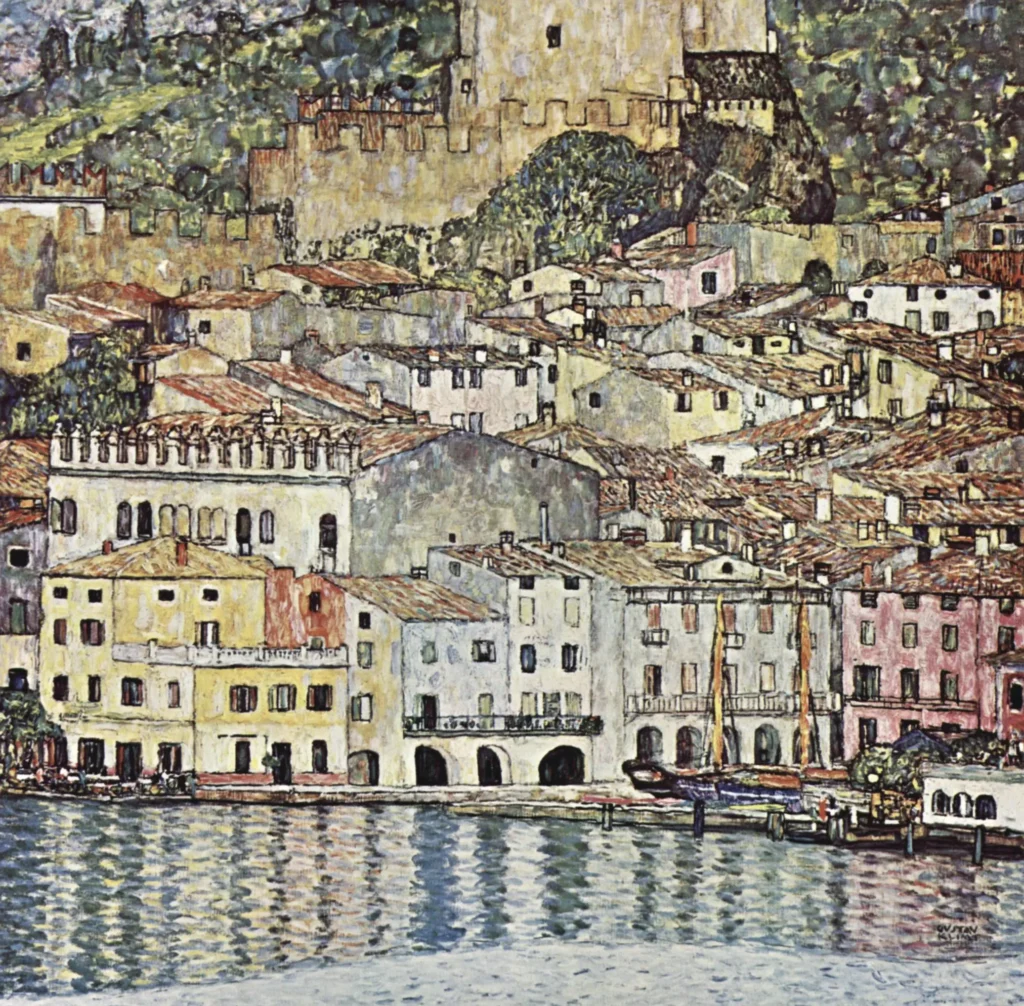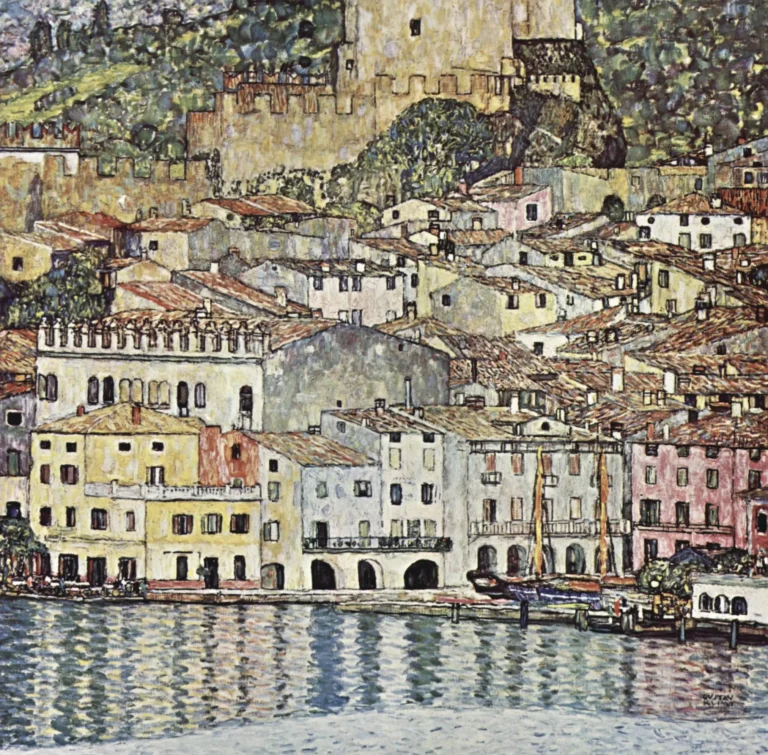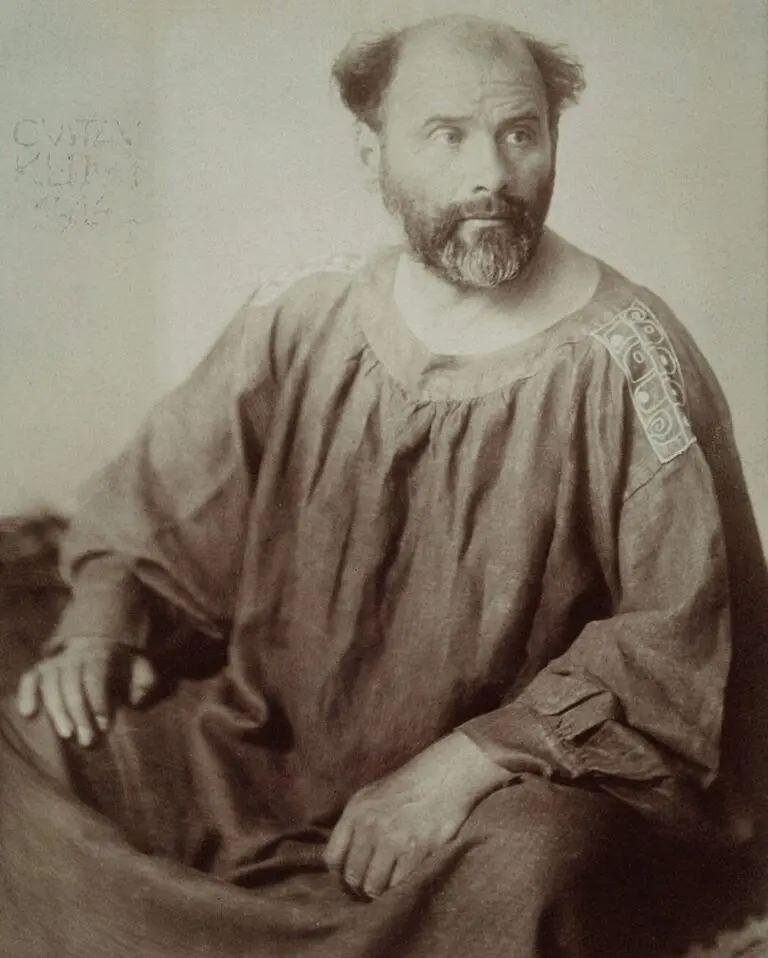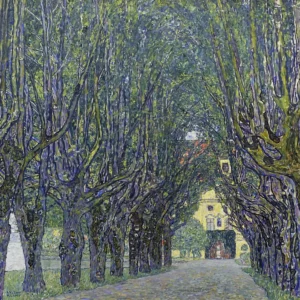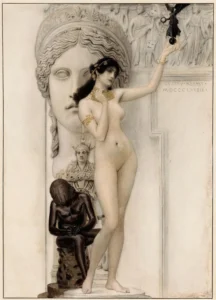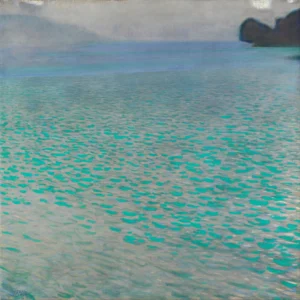Malcesine am Gardasee (1913)
In 1913, Gustav Klimt traveled to Lake Garda, breaking his usual visit to the Austrian Alps, which inspired his painting 'Malcesine on Lake Garda.' The artwork reflects a significant shift in Klimt’s style characterized by more expansive compositions and a light-filled atmosphere, contrasting sharply with his earlier, more claustrophobic landscapes. Influences from Cubism emerged, but Klimt's handling remained uniquely his own. Unfortunately, this piece was lost in the Schloss Immendorf fire, but it continues to symbolize Klimt's creative evolution and exploration of new artistic dimensions.
1913
About the Artwork
Did You Know
Liked what you see? Add it to your collection.
Enjoyed reading? Share it.
... continued
Location and Inspiration
In 1913, Klimt broke his usual annual three-month visit to Attersee spa in the Austrian Alps and instead traveled to Lake Garda in Italy. This change of scenery, possibly influenced by his friend Egon Schiele, who preferred traveling abroad, had a notable impact on Klimt's work.
Style and Technique
The painting is characterized by a transformed handling of subject matter, panorama, lighting, and form compared to his earlier works. It features a more expansive and light-filled style, contrasting with the typically intense and claustrophobic scenes from his Austrian landscapes. The atmosphere is one of life and frivolity, differing from the somber and emotionally charged visions of his home scenes.
Influence of Cubism
Although some critics suggest that Cubism may have influenced this work, given Klimt's recent exposure to the movement during trips to Paris where he saw works by Pablo Picasso and Georges Braque, this influence is considered experimental and limited. Egon Schiele's landscapes from this period show a more pronounced Cubist approach, but Klimt's work does not fully embrace Cubism.
Fate of the Painting
Sadly, 'Malcesine on Lake Garda' was destroyed in the Schloss Immendorf fire, making it one of Klimt's lost works.
Despite its destruction, the painting remains an important part of Klimt's artistic evolution, reflecting his response to new environments and artistic movements.




